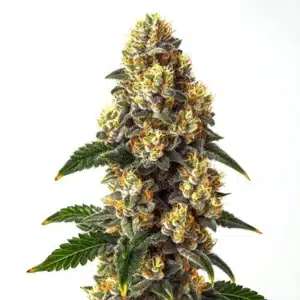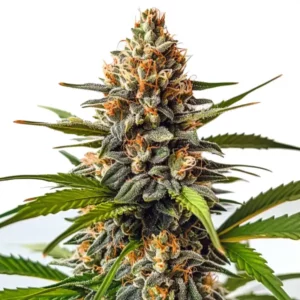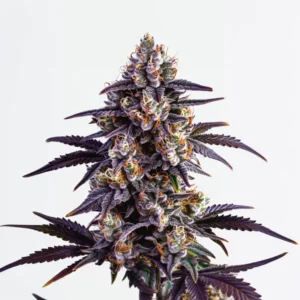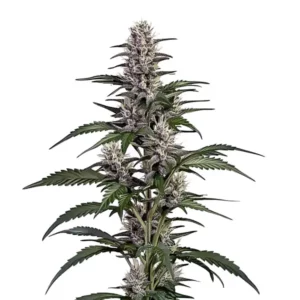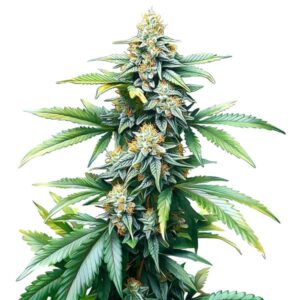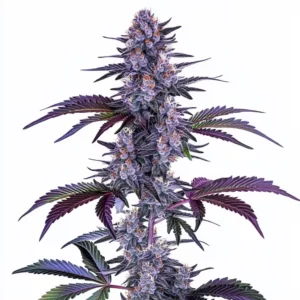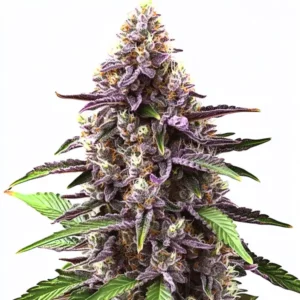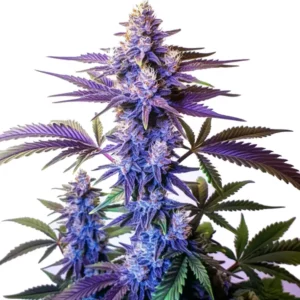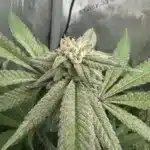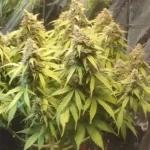
How to Grow Humboldt Weed Strain
Humboldt Weed Strain Description
Humboldt Strain is a feminized variety that delivers a strong and relaxing experience. With medium THC levels ranging from 17% to 21% and very low CBD (around 0.02), it leans mostly toward an indica effect despite a 60% Indica / 40% Sativa genetic makeup (Humbolt x Afghan Kush). Humboldt Weed Strain buds are moderately dense and its terpene profile, dominated by Caryophyllene along with others like Alpha-Pinene and Myrcene, gives it earthy and herbal flavors that soothe anxiety, depression, and insomnia.
The strain is well-suited for beginners due to its forgiving nature and consistent performance. Humboldt Weed Strain provides a balanced effect leaving users aroused, energetic, and relaxed. This combination of a solid body high with a clear mind makes it a favorite among those seeking relief from stress or sleep issues without overwhelming sedation.
Recommended Strains
Humboldt
|
|
THC | 17% - 21% (Medium) |
|
|
Type | Feminized |
|
|
Yield | High |
|
|
Phenotype | 60% Indica / 40% Sativa |
Bubba Kush
|
|
THC | 14% - 19% (Medium) |
|
|
Type | Feminized |
|
|
Yield | Medium |
|
|
Phenotype | 80% Indica / 20% Sativa |
Promos & Deals
Humboldt Weed Strain Optimal Growing Environment
Humboldt Weed Strain grows best in stable conditions. Indoor growers should maintain daytime temperatures between 70°F and 80°F (21°C-27°C) with slightly cooler nights to aid bud formation. During the vegetative phase, keeping humidity between 60% and 70% encourages robust growth; during flowering, lowering humidity to 40%-50% helps prevent mold and supports resin production.
For outdoor cultivation, select a sunny location with nutrient-rich, well-draining soil. Enrich your soil with organic compost or worm castings, as recommended by the document data, to boost fertility. Providing protection from strong winds using basic barriers or natural windbreaks ensures a steady environment for your Humboldt plants to thrive.
Setting Up Your Grow Space
Indoor Cultivation
Set up a dedicated grow space like a small room or a grow tent. Cover walls with reflective material (such as Mylar) to maximize light distribution. Install oscillating fans and an exhaust system with a carbon filter to keep heat and odors in check. Start Humboldt Weed Strain in small pots using high-quality soil with a pH of 6.0 to 6.5. As the plants grow, transplant them into larger containers to give the roots enough space.
Outdoor Cultivation
For outdoor growing, prepare your garden area by mixing in organic matter to enrich the soil. Choose a spot with full sun exposure and ensure the soil drains well. Use raised beds or large containers if needed, and erect simple windbreaks to shield your plants from strong gusts. Regular maintenance such as timely watering and weed removal creates an ideal environment for Humboldt Weed Strain.
Propagation and Germination
Begin with premium feminized seeds of Humboldt Weed Strain. Soak the seeds in distilled water or place them on a damp paper towel for 24-48 hours to soften the seed coat and initiate germination. Once a small taproot appears, plant the seeds in a container filled with light, well-draining soil.
Maintain a warm environment at around 75°F to 80°F (24°C-27°C) and humidity levels between 60% and 70% until seedlings show their first true leaves. Gradually increase light intensity as the young plants grow, setting a solid foundation for vigorous development.
Humboldt Weed Strain Vegetative Phase
During the vegetative stage, Humboldt Weed Strain quickly builds a robust structure. Provide 18-20 hours of light per day to promote strong leaf and stem development. Use a nitrogen-rich fertilizer to support healthy growth. Techniques such as low-stress training (LST) or topping encourage an even canopy, allowing light to reach all parts of the plant.
Monitor temperature, humidity, and watering regularly. These active, consistent measures prepare the plants for a smooth transition into the flowering phase, ensuring they develop the strength needed for dense bud production.
Humboldt Weed Strain Flowering Phase
When ready to flower, switch the light cycle to 12 hours on and 12 hours off. Humboldt Weed Strain then focuses on forming thick, resinous buds. Use fertilizers high in phosphorus and potassium to boost bud development. Maintain cooler temperatures (65°F-75°F) and low humidity (40%-50%) to minimize mold risk and maximize resin output.
If needed, provide support with stakes or trellises as heavy buds may cause branches to bend. Regularly inspect the trichomes with a magnifier; when most are milky with hints of amber, it’s time to harvest.
Fertilization and Nutrition
Feed Humboldt Weed Strain with a balanced nutrient schedule. During the vegetative phase, a nitrogen-rich fertilizer promotes strong foliage growth. Switch to a blend rich in phosphorus and potassium during flowering to enhance bud formation. Keep the pH stable between 6.0 and 6.5 to ensure optimal nutrient absorption.
Adding organic supplements like compost or worm castings can further enrich your soil and improve both yield and flavor. Monitor watering closely to avoid over- or underwatering, and adjust nutrient dosages based on plant health.
Humboldt Weed Strain Pest and Disease Control
Inspect your grow space daily for pests such as spider mites, aphids, or thrips. Use organic treatments like neem oil at the first sign of infestation. Ensure good airflow and remove dead leaves promptly to reduce the risk of fungal diseases. If any mold or mildew appears, remove affected areas immediately and adjust humidity levels.
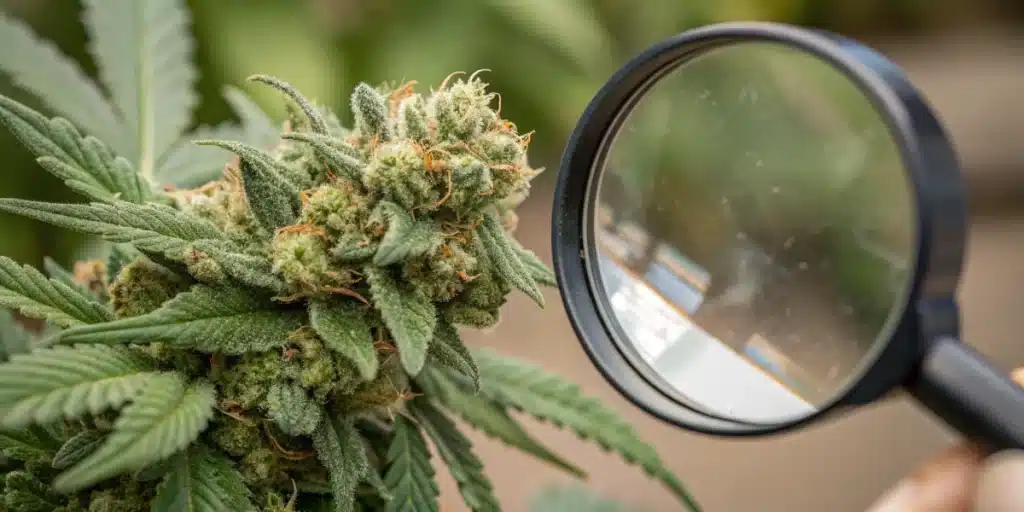
Harvesting and Curing
When most trichomes on Humboldt Weed Strain turn milky with some amber, it’s time to harvest. Use clean, sharp tools to carefully cut the branches. Dry the buds in a dark, well-ventilated area with temperatures between 60°F and 70°F, ensuring proper airflow.
After drying, cure the buds in airtight glass jars. Open the jars daily for the first week to release excess moisture, then let the buds cure for 2-4 weeks. This process refines the flavor and potency while preserving the strain’s earthy, herbal aroma.
Humboldt Weed Strain Indica or Sativa?
Humboldt Weed Strain has a 60% Indica / 40% Sativa genetic ratio but is described as mostly Indica. It provides a strong and relaxing experience that soothes the body while still offering clear-headed effects. This blend makes it ideal for relieving anxiety, depression, and insomnia.
Advantages and Disadvantages
Advantages: Humboldt Weed Strain is beginner-friendly and produces medium yields about 1.64 oz/ft² or 17 oz per plant. Its balanced genetics deliver a strong, relaxing high with earthy, herbal flavors. The strain’s forgiving nature and moderate flowering time (8-10 weeks) make it popular for consistent results.
Disadvantages: The strain requires careful nutrient and environmental control to maintain its delicate flavor profile. Extra support might be needed during flowering to prevent branch breakage, and yields remain moderate compared to high-producing varieties.
Why Buy Humboldt Weed Strain
Choose Humboldt Weed Strain if you’re looking for a strain that provides a strong, relaxing experience with therapeutic benefits for anxiety, depression, and insomnia. Its balanced, mostly Indica profile makes it suitable for beginners and experienced growers alike. Trusted suppliers list it as a reliable option with consistent performance and moderate yields, perfect for a manageable yet rewarding cannabis garden.
Common Growing Problems
Watch for nutrient imbalances, overwatering, and pest infestations. Inconsistent temperature or humidity can stress the plants and reduce yields. Quick, active management of these issues such as adjusting nutrient doses, ensuring proper watering, and regular inspections helps keep Humboldt Weed Strain healthy throughout its growth cycle.
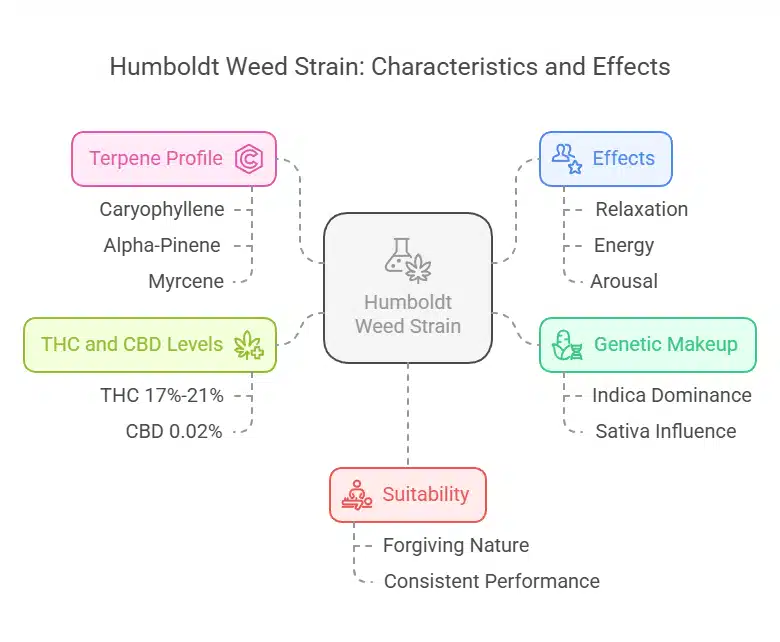
Humboldt Weed Strain Similar Strains
Afghan Kush
Afghan Kush shares similar genetics with Humboldt Weed Strain, offering a strong, relaxing high and robust resin production. It’s popular for its earthy, spicy flavors and reliable performance.
Granddaddy Purple
Granddaddy Purple is known for its heavy, sedative effects and sweet, grapey aroma. While more potent, its relaxing properties make it a good alternative for those seeking stress relief.
Blueberry
Blueberry is famous for its sweet, fruity flavor and balanced effects. Its genetic heritage often overlaps with other indica-dominant strains, appealing to growers who enjoy earthy, natural aromas.
Tips for Professionals
Advanced growers use timers, quality sensors, and organic supplements to fine-tune every detail of the grow. Keeping detailed records of light cycles, nutrient adjustments, and environmental conditions helps pinpoint improvements quickly. Active, hands-on care combined with modern technology ensures Humboldt Weed Strain consistently delivers premium yields.
FAQs
What makes Humboldt Weed Strain special?
Its balanced genetics and medium THC (17%-21%) provide a strong, relaxing high with therapeutic benefits for anxiety, depression, and insomnia. Its earthy, herbal flavor profile is enhanced by a rich terpene blend.
How long is the flowering period?
The strain typically flowers in 8-10 weeks, making it a manageable option for many growers.
Can beginners grow Humboldt Weed Strain?
Yes, it is recommended for beginners due to its forgiving nature and consistent performance under proper care.



